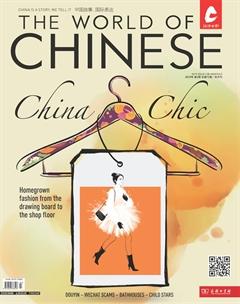Eating likeemperors
孙佳慧
Piqued by pop culture, Chinas public is hungry for all things imperial
Just a month after opening, the Forbidden Citys “Corner Tower Restaurant” has closed. The problem? Overcapacity—seats at its “imperial” hot pot feast, first unveiled on February 5, had been reserved through to mid-March, and walk-in customers were lining up for hours to partake.
While most reviews agree that the Corner Towers food was fine, those in the queue would freely admit that they were really there for the imperial “atmosphere”: portraits of emperors and empresses on the walls, a menu written in the tone of an imperial edict, and a chrysanthemum soup base supposedly favored by Qing Empress Dowager Cixi. “Its more about getting close to the culture of the Forbidden City,” a customer told Beijing Youth Daily.
In the era where restaurants and food trends go viral on video apps like Douyin, imperial dining has become big business. Desserts such as date-yam cake, lotus pastry, and lotus-root starch balls have become bestsellers after appearing on emperors and concubines tables in popular TV dramas like 2011sEmpresses in the Palaceand 2018sStory of Yanxi Palace. In Beijings Wangfujing area, time-honoredsiu mairestaurant Duyichu advertises the fact that its name was bestowed by the Qing Emperor Qianlong. High-end restaurant Guigongfu in Houfangjiayuan Hutong, a residence of Cixi before her marriage, is now a foodie pilgrimage site that serves a menu known as the “Empresses Dowagers Family Feast.”
Fangshan Restaurant in Beihai Park, founded by former imperial cooks in 1925, was the pioneer in the food genre now known as “court cuisine.” In ancient China, imperial families enjoyed exclusive dishes that the common people had no opportunity to eat; exact menus can only be guessed from historic documents or folk tales. The contents of the famous Manchu-Han Banquet, said to have consisted of 196 main dishes and 124 sides, was among the greatest mysteries of the Qing court—theres even some doubt whether this banquet ever existed.
Though the Qing dynasty perished over 100 years ago, restaurants have been trying to recreate the “lost” banquets menu since at least the 1970s. In 2004, 12 diners at a Xian restaurant spent 366,000 RMB on 14 entrees and several side dishes from a purportedly authentic Manchu-Han Banquet menu.
Modern interest in imperial cuisine “reflects curiosity [about nobility], and a desire for a dainty lifestyle,” food critic Liu Zhilin tells TWOC. “Its a transition from tasting food to tasting culture.” Compared to the Xian banquet, a two-hour wait for a Forbidden City hot pot sounds like a steal—if the restaurant ever opens again. – SUN JIAHUI

